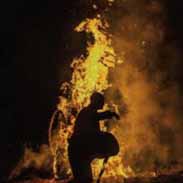Cleavage Furrow Forms During Flashcards, test questions and answers
Discover flashcards, test exam answers, and assignments to help you learn more about Cleavage Furrow Forms During and other subjects. Don’t miss the chance to use them for more effective college education. Use our database of questions and answers on Cleavage Furrow Forms During and get quick solutions for your test.
What is Cleavage Furrow Forms During?
Cleavage furrow formation is a critical step in cell division that creates two distinct daughter cells from a single parent cell. During this process, the cleavage furrow forms at the equatorial plane of the cell and marks the site of impending cytoplasmic division. It begins with a localized constriction of the plasma membrane near the equator, followed by reorganization of cortical actin filaments and myosin II motor proteins to generate an inward-directed force that deepens and broadens the cleavage furrow until it reaches completion. The formation and completion of this furrow are essential steps in regulating proper chromosome segregation during mitosis or cytokinesis. The initial step in forming a cleavage furrow is dependent on signals from surrounding microtubules. Microtubule-organizing centers (MTOCs) such as centrosomes direct microtubules towards both poles, generating an antipolar arrangement which results in outward pushing forces laterally across the cell cortex. This tension is countered by opposing inward pulling forces generated by cortical myosin II motor proteins, causing a localized constriction at the equatorial plane known as contractile ring or precleavage furrow which marks where cytoplasmic division will occur. Following localization of precleavage ring, reorganization occurs involving both actin filaments and contractile proteins such as myosin II which begin to assemble along its circumference to form mature cleavage furrows. In mammalian cells, two types of actin filament networks are involved: radial arrays associated with precleavage rings; and circumferential bundles located around mature cleavage furrows that contain higher concentrations of cross-linked F-actins than radial arrays do. Myosin II motors bind to these newly formed F-actins via their globular heads to generate an inward directed force that causes further deepening and widening of the cleavage furrow until it reaches completion (full closure). In addition to providing mechanical tension for furthering constriction, myosin also contributes regulatory molecules including cyclase activity components necessary for completing cytokinesis.







